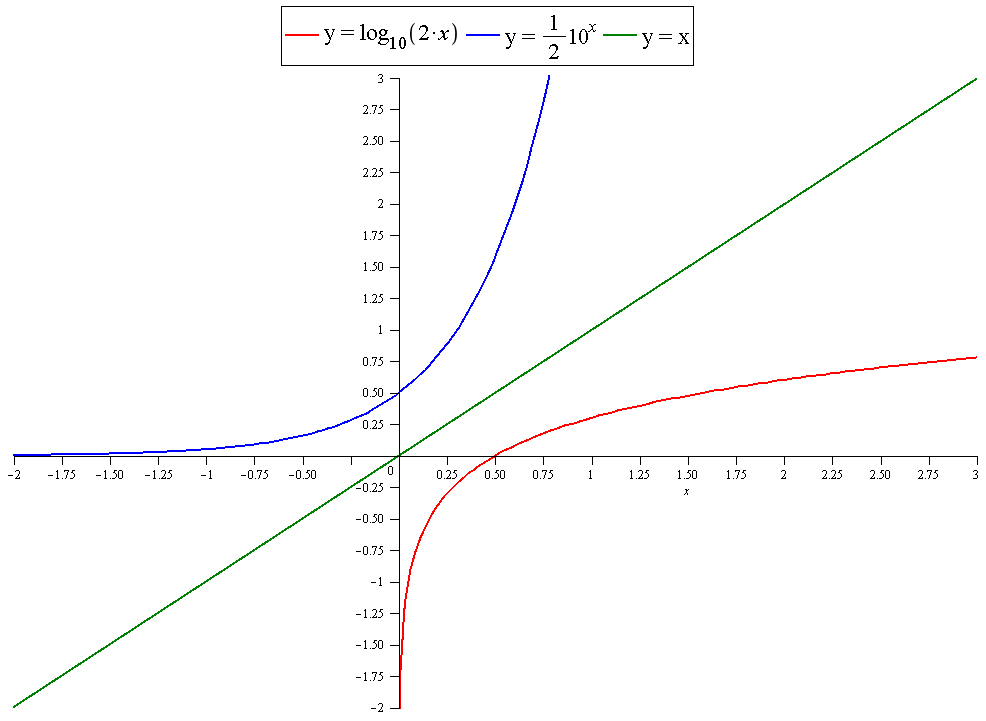First find the inverse of #y=log2x# ( Assuming base 10 )
Rewrite this using the concept of a logarithm:
#10^y=2x=>x=1/2 10^y#
Substituting #y=x#
#y=1/2 10^x#
This is the inverse.
Graph #y=log2x#
x axis intercept when #y=0#
#log2x=0#
Taking antilogarithms:
#2x=10^0=1#
point for graphing #( 1 , 0 )#
as #x->oo# , #color(white)(88)log2x->oo#
as #x->-oo# , #color(white)(88)log2x-># undefined
as #x->0^+# , #color(white)(88)log2x->-oo# ( y axis is vertical asymptote )
as #x->0^-# , #color(white)(88)log2x-># undefined
For #color(white)(888)y=1/2 10^x#
y axis intercept when #x=0#
#y=1/2 10^0=>y=1/2#
x axis intercept when #y=0#
#1/2 10^x=0# ( no solution for real values )
as #x->oo# , #color(white)(888)1/2 10^x->oo#
as #x->-oo# , #color(white)(888)1/2 10^x->0# ( x axis is a horizontal asymptote)
As can be seen from the graph, the inverse is #y=log2x# reflected in the line #y=x#.



